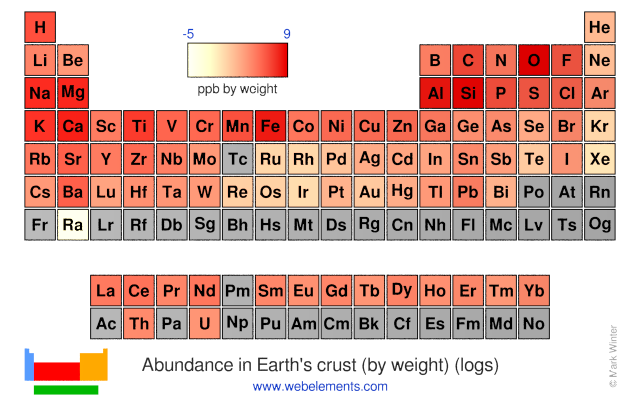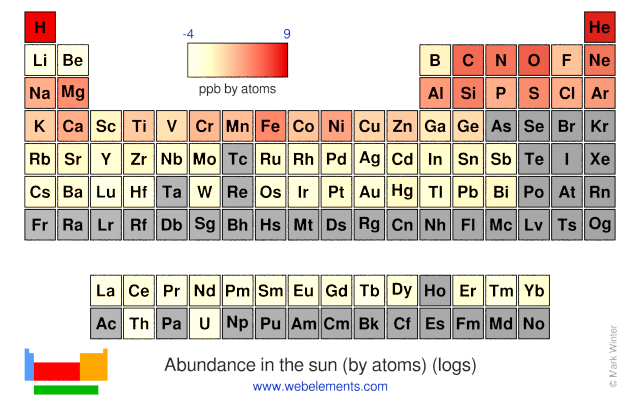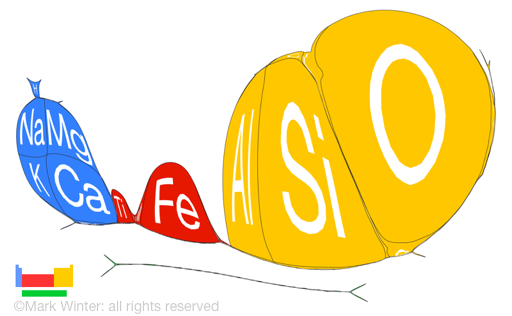Silicon - 14Si: geological information
Silicon is not found free in nature, but occurs chiefly as the oxide, and as silicates. Sand, quartz, rock crystal, amethyst, agate, flint, jasper, and opal are all silicon oxides. Granite, hornblende, asbestos, feldspar, clay, mica are a few of the many silicate minerals. Silicon makes up 25.7% of the earth's crust by weight and is the second most abundant element in the earth's crust. Silicon is present in the sun and stars and is a principal component of a class of meteorites known as aerolites.
Abundances of silicon in various environments
In this table of abundances, values are given in units of ppb (parts per billion; 1 billion = 109), both in terms of weight and in terms of numbers of atoms. Values for abundances are difficult to determine with certainty, so all values should be treated with some caution, especially so for the less common elements. Local concentrations of any element can vary from those given here an orders of magnitude or so and values in various literature sources for less common elements do seem to vary considerably.
| Location | ppb by weight | ppb by atoms |
|---|---|---|
| Universe | 700000 | 30000 |
| Sun | 900000 | 40000 |
| Meteorite (carbonaceous) | 140000000 | 100000000 |
| Crustal rocks | 270000000 | 200000000 |
| Sea water | 1000 | 220 |
| Stream | 5000 | 180 |
| Human | 260000 | 58000 |


The chart above shows the log of the abundance (on a parts per billion scale) of the elements by atom number in our sun. Notice the "sawtooth" effect where elements with even atomic numbers tend to be more strongly represented than those with odd atomic numbers. This shows up best using the "Bar chart" option on the chart.

